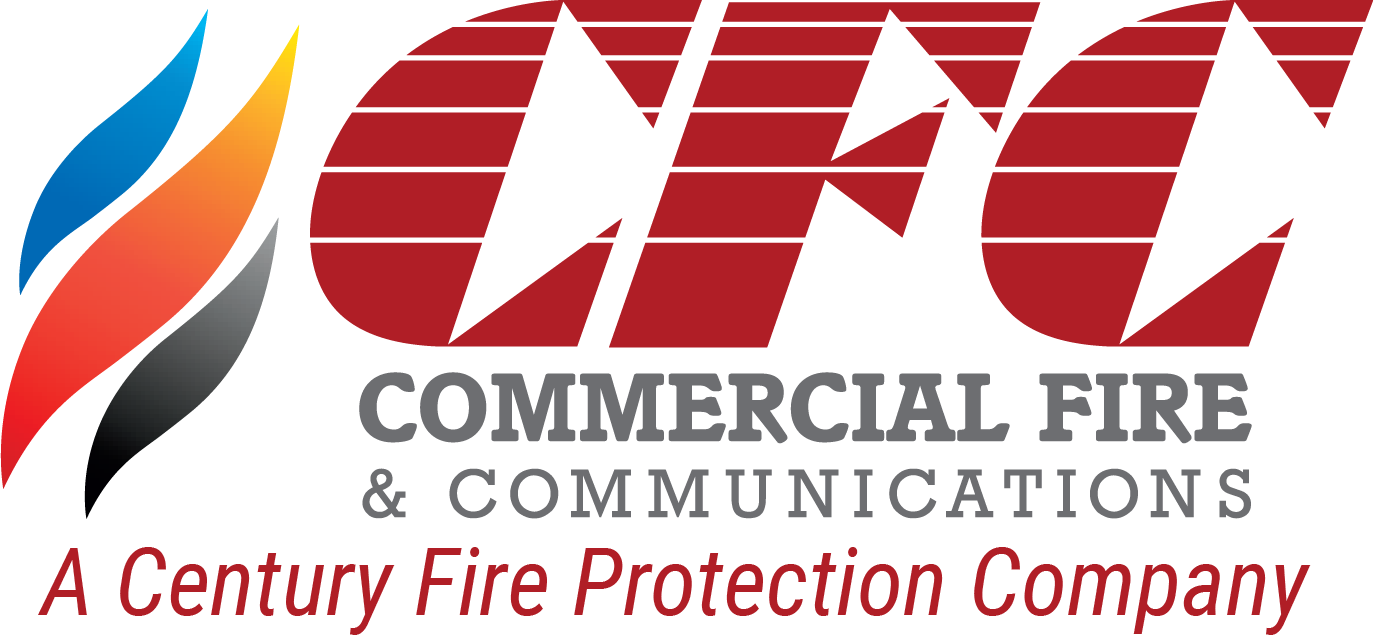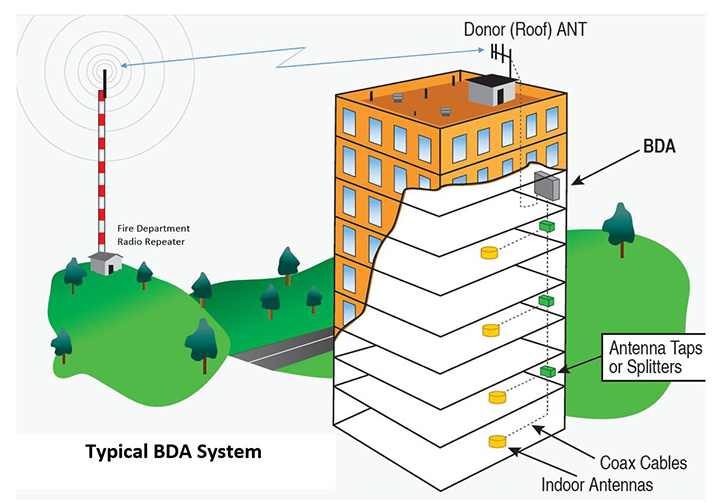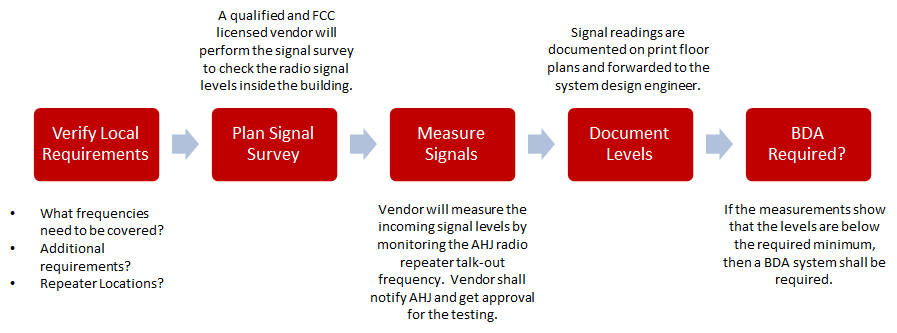Bi-directional amplifiers, or simply BDAs, help increase the coverage of public safety communications systems and have become an essential part of two-way radio communications systems. Together with a network of indoor antennas, BDAs can provide reliable public safety radio system coverage inside a building.
In this article we are going to take a look at BDA systems code requirements and deployment processes in Florida.
The Code Requirements for BDA Systems in Florida
BDA code-driven requirements can be found in several organizational documents, including those produced by NFPA, IBC, and IFC. Florida currently follows NFPA 101, 2015 Edition and NFPA 1 2015 Edition. NFPA 1 Section 11.10 requires all new and existing buildings to have minimum radio signal strength for all fire department communications. The radio signal strength has to be maintained at the level specified by the AHJ.
The AHJ will assess the need for a two-way radio communication enhancement system, typically by reviewing a radio signal survey performed by an approved third-party integrator such as CFC. The survey must be performed by a qualified and FCC GROL licensed BDA technician. If the radio signal strength testing indicates the need for the installation of a two-way radio communications enhancement system this shall be submitted for proper permits through the City building department and must comply with NFPA 72 and 1221.
If you own or manage a high-rise building in Florida, you should be familiar with Florida Statute 633.202. Let us break it down for you:
- Existing high-rise buildings are required to have completed a radio signal strength survey.
- Existing high-rise buildings have until January 1, 2022, to improve the signal levels to meet AHJ requirements.
- Apartment buildings are not required to comply until January 1, 2025, but they are required to apply for the appropriate permit by December 31, 2022.
The coverage requirements include:
- 99% coverage in critical areas (emergency command centers, fire pump rooms, exit stairs & passageways, elevator lobbies, standpipe cabinets, and valve locations); and
- 90% coverage in general building areas.
Deployment Process for BDA Systems
BDA requirements and regulations are relatively new to the Florida market, so we would like to summarize some key steps along the deployment timeline. The process begins by verifying local requirements. The AHJ will determine what frequencies need to be covered and any additional requirements. Next, a qualified and FCC licensed vendor will perform the signal survey to check the radio signal levels inside the building. The vendor will measure the signal levels on the required frequencies after getting approval for the testing. Following the survey, signal readings are documented on print floor plans and forwarded to the appropriate parties. If the measurements show that the levels are below the required minimums, then a BDA system shall be required.
If you have any more questions about the specifics of the deployment process for BDA systems in your Florida building, feel free to contact CFC – licensed and certified to survey and install a complete BDA solution.


